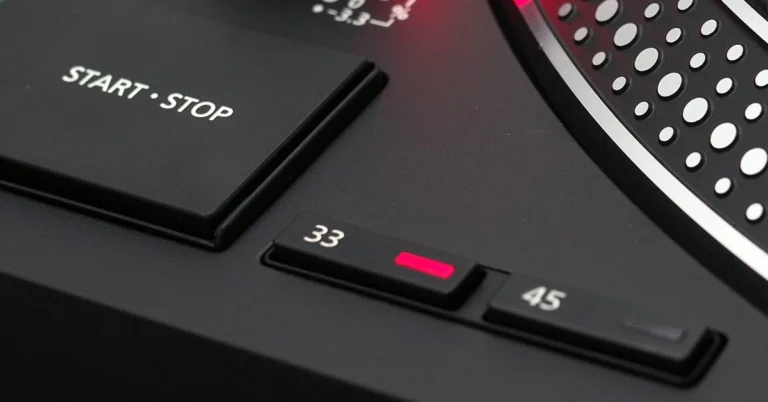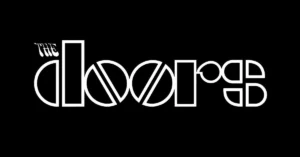What RPM Should You Play This Record At?
Why vinyl record speeds matter.
Play a record at the wrong speed, and it sounds wrong. It’s too slow, and the singer drags like a zombie. Too fast, and they squeal like a chipmunk.
Vinyl records are meant to spin at a specific speed, and if you’re just getting started, that number RPM can be confusing.
Let’s fix that.
And if you need help setting up your deck, check out my Turntable Set Up Guide.
What Does RPM Mean for Vinyl?
RPM stands for revolutions per minute. It’s how many times the record spins on your turntable in one minute. The three most common speeds are:
- 33 1/3 RPM
- 45 RPM
- 78 RPM
Play a 45 at 33 RPM, and the sound gets sluggish. Play a 33 at 45 RPM, and it speeds up like a bad remix. Matching the record with the right speed keeps the pitch, tempo, and mood right.
Most Records Use These Speeds
Common Vinyl Record Speeds Explained
Here’s a quick guide to the speeds and what types of records use them:
33 1/3 RPM
- Most 12-inch LPs (long-playing albums)
- Each side holds about 20–25 minutes of music
- Lower speed, longer play time, slightly lower fidelity
45 RPM
- Most 7-inch singles
- Some 12-inch audiophile pressings
- Higher speed means better sound, shorter play time
78 RPM
- Shellac records from the early 1900s to the 1950s
- Usually 10-inch, break easily
- Not playable on most modern turntables
How to Know What Speed to Use
Vinyl Record Speeds
If you’re unsure what speed to use, start by checking the label. Most records have the speed printed somewhere on the center label.
If not, here’s a general rule of thumb:
- 7-inch single? Most likely 45 RPM
- 12-inch LP? Usually 33 1/3 RPM
- 12-inch single? It could be 45 or 33. Check the label or sleeve
- Old shellac disc? Likely 78 RPM, but don’t guess these are fragile
Still unsure? Try playing it both ways. You’ll hear right away which one is correct. Vocals will sound either natural or comically off.

Why Do Different Viny Record Speeds Exist?
Different speeds offer trade-offs between sound quality and playtime.
- 33 1/3 RPM was created to fit more music on one side. Good for full albums.
- 45 RPM spins faster, which gives better sound, especially on bass and high-end details. Great for singles or audiophile cuts.
- 78 RPM was standard before modern vinyl. The fast speed was needed for older equipment and materials.
Faster speeds give better sound but take up more space. That’s why most albums use 33 RPM, it’s a balance.
Vinyl Record Speed Chart
Here’s a quick reference chart to help:
| Record Type | Size | RPM |
|---|---|---|
| LP Album | 12-inch | 33 1/3 |
| Single | 7-inch | 45 |
| Audiophile Single | 12-inch | 45 |
| Shellac Disc | 10-inch | 78 |
What Happens If You Play It Wrong?
You won’t break anything by playing at the wrong RPM. But it will sound off:
- 45 played at 33 = sluggish, too low
- 33 played at 45 = fast, high-pitched
This won’t damage the record or needle. But it ruins the music. So if it sounds weird, stop and switch speeds.
Some turntables auto-detect speed, but most have a manual switch. It’s usually labelled right on the deck: 33, 45, and sometimes 78.
Are There Any Odd Cases?
Yes, a few.
- Some 12-inch records are cut at 45 RPM for better quality. These are common in dance music and reissues.
- Some box sets mix speeds; one disc might be 33, the next 45.
- Some picture discs and colored vinyls don’t list the speed clearly. Always test.
- Some record players can’t play 78 RPM at all.
Always double-check before dropping the needle.
Tips to Stay on Track with vinyl record speeds
- Keep a note of what speed each record needs
- Label records that don’t say
- Learn to spot the difference by ear
- Use a turntable with clear RPM controls
- Keep your stylus clean—distortion can sound like speed issues
Also, keep in mind that older records might have been pressed outside standard guidelines. Imports and obscure labels don’t always follow the rules. Collectors sometimes run into pressings with no info at all. In those cases, you’ll need to use your ears.
If you’re digitizing vinyl, the right RPM is even more important. Recording at the wrong speed means every track is off. Fixing that in software is tricky. Best to get it right at the turntable.
If you’re sharing records with someone new to vinyl, teach them the basics of speed. It’ll save you both time and awkward listening. Include a sticky note or sleeve insert for special cases. Some collectors even print their own speed labels for clarity.
Final Thoughts
Knowing the right RPM keeps your records sounding as they should. It’s a small detail with a big impact.
Whether you’re playing old soul singles or new vinyl reissues, matching speed to format makes the music shine.
When in doubt, check the label, check your ears, and spin smart.
Vinyl has its quirks, but that’s part of the fun.
Getting the speed right is one of those simple habits that makes listening better and makes you look like you know your stuff.




